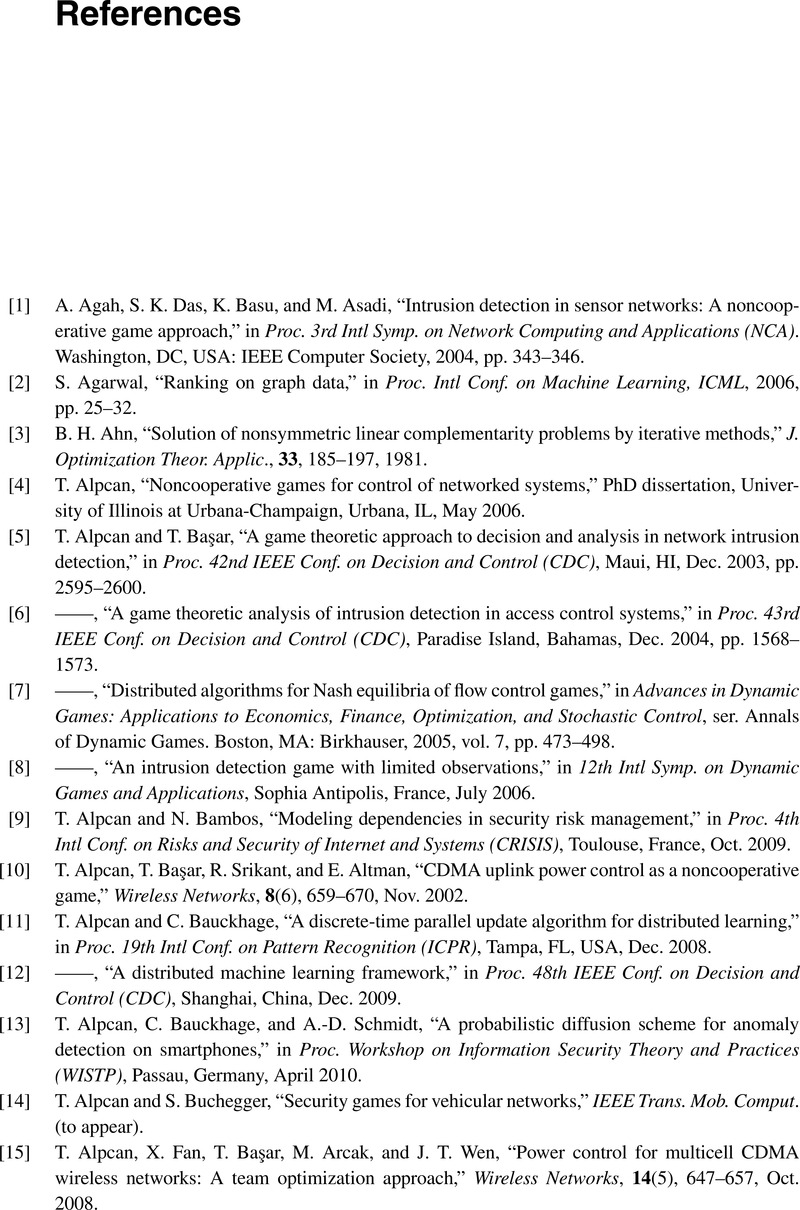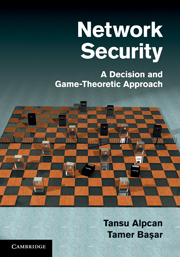References
Published online by Cambridge University Press: 02 December 2010
Summary

Information
- Type
- Chapter
- Information
- Network SecurityA Decision and Game-Theoretic Approach, pp. 302 - 311Publisher: Cambridge University PressPrint publication year: 2010
